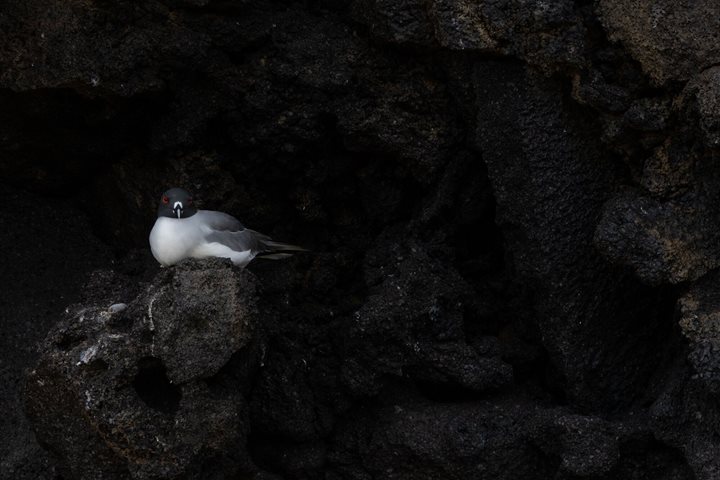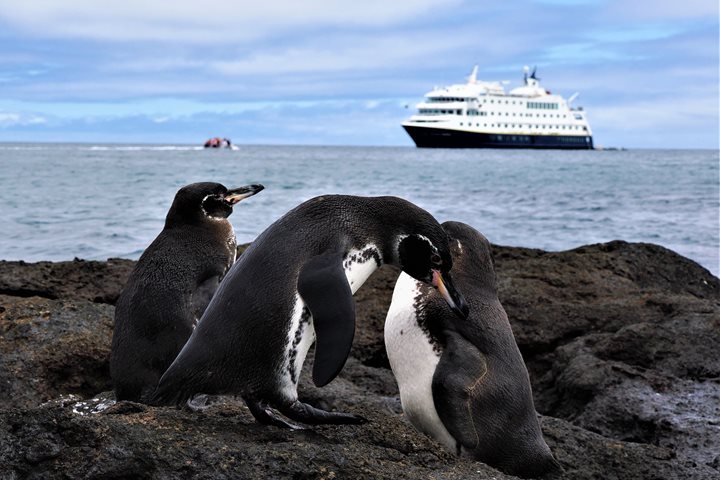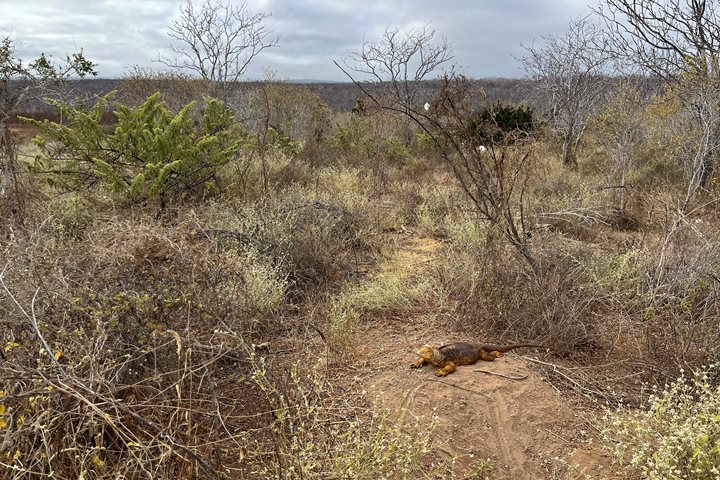Today we continued our expedition exploring the northern area of Santa Cruz Island.
We disembarked early to hike on the dry area known as Dragon Hill, of course searching for our own Galapagos dragons: the Galapagos land iguanas.
The area has beautiful vegetation, a lot of Sesuvium covering the sand, and the picturesque “leather leaf” along the shore. “Palo Santo” is the predominant tree species of the dry area of vegetation in the Galapagos. Now it has leaves, but during the dry season it saves its energy by dropping them all. You can find some of the tallest cactus of the islands here. Cacti have evolved into the sizes of trees to be safe from their predators: iguanas and tortoises.
A brackish water lagoon is the entrance to the iguana area. Flamingos welcomed us in this unreal landscape. Then we started finding the iguanas, hiding under the shade of trees, one then the other. As we trained our eyes, suddenly we could see that we were surrounded by them, they were everywhere!
The Galapagos Islands, as part of their human history, have very curious names. Some English, many Spanish, some Ecuadorian…one single island can have a lot of names! Today we snorkeled at “Guy Fawkes.” As Alec McEwen mentioned in his article about the English place-names of the Galapagos: “perhaps the same whimsical combination of disapproval and admiration that has inspired fireworks celebrations on 5 November each year to commemorate the failed Gunpowder Plot also led to the perpetuation of the traitor's name on a remote group of islands 10 000 kilometers away from the Houses of Parliament that he tried to blow up.” This remote group of islands offered an amazing snorkel for us today!
In the afternoon we visited “Eden,” an islet very close to Santa Cruz Island and named after Admiral Henry Eden (1797-1888). We explored the area from our Zodiacs, while our younger explorers and some brave parents enjoyed of some Zodiac driving lessons. We came back on time to start our navigation to the emblematic “Daphne Mayor Islet,” home of the most studied finches from the Galapagos and place that inspired the Pulitzer winner “The Beak of the Finch.” Daphne is named after the 18-gun corvette, HMS Daphne.
This is Galapagos, a combination of human history from the different visitors to the archipelago, natural history that we can witness while exploring, and science that has contributed to our understanding of life itself. Today we learn about each of these different chapters of the Galapagos. What a learning experience!







